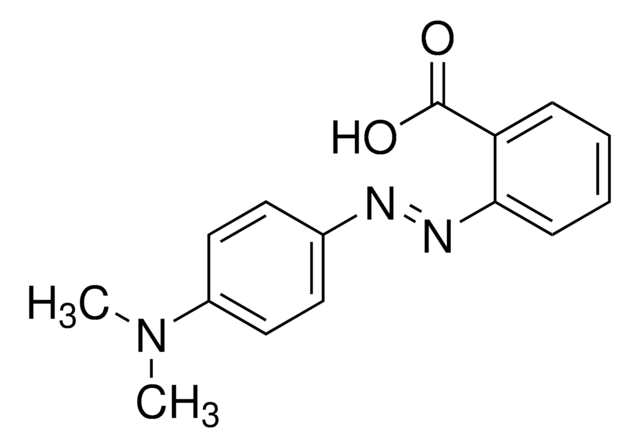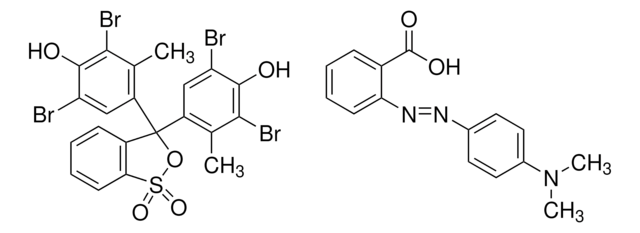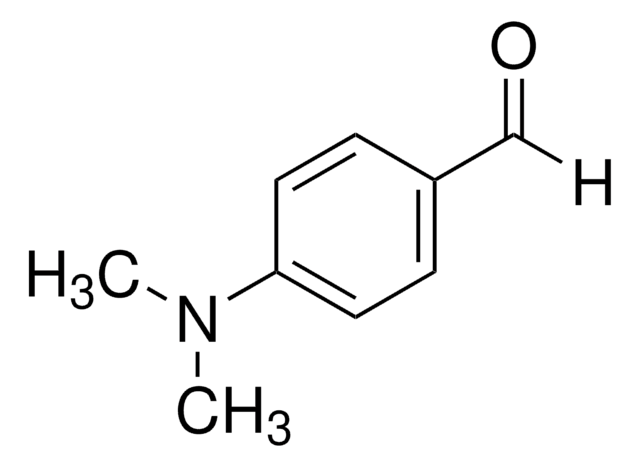08714
Methyl Red solution
suitable for microbiology
Sinônimo(s):
Methyl red indicator solution
About This Item
Produtos recomendados
Agency
according to GB 4789.30-2016
according to ISO 22964:2017
Nível de qualidade
linha de produto
BioChemika
prazo de validade
limited shelf life, expiry date on the label
composição
dist. water, 200 mL
ethanol 95%, 300 mL
methyl red, 0.1 g
técnica(s)
microbe id | metabolite detection: suitable
aplicação(ões)
clinical testing
environmental
food and beverages
microbiology
adequação
Enterococcus spp.
Escherichia coli
Klebsiella spp.
Proteus spp.
Pseudomonas spp.
Staphylococcus spp.
bacteria
cadeia de caracteres SMILES
CN(C)c1ccc(cc1)\N=N\c2ccccc2C(O)=O
InChI
1S/C15H15N3O2/c1-18(2)12-9-7-11(8-10-12)16-17-14-6-4-3-5-13(14)15(19)20/h3-10H,1-2H3,(H,19,20)/b17-16+
chave InChI
CEQFOVLGLXCDCX-WUKNDPDISA-N
Procurando produtos similares? Visita Guia de comparação de produtos
Categorias relacionadas
Descrição geral
Aplicação
Palavra indicadora
Danger
Frases de perigo
Declarações de precaução
Classificações de perigo
Eye Irrit. 2 - Flam. Liq. 2
Código de classe de armazenamento
3 - Flammable liquids
Classe de risco de água (WGK)
WGK 1
Ponto de fulgor (°F)
69.8 °F
Ponto de fulgor (°C)
21 °C
Equipamento de proteção individual
Eyeshields, Faceshields, Gloves, type ABEK (EN14387) respirator filter
Escolha uma das versões mais recentes:
Já possui este produto?
Encontre a documentação dos produtos que você adquiriu recentemente na biblioteca de documentos.
Os clientes também visualizaram
Artigos
For microbiologists the most fundamental stain was developed in 1884 by the Danish bacteriologist Hans Christian Gram.
Sigma-Aldrich.com presents an article concerning Differentiation of Escherichia coli from coliforms.
Nossa equipe de cientistas tem experiência em todas as áreas de pesquisa, incluindo Life Sciences, ciência de materiais, síntese química, cromatografia, química analítica e muitas outras.
Entre em contato com a assistência técnica











